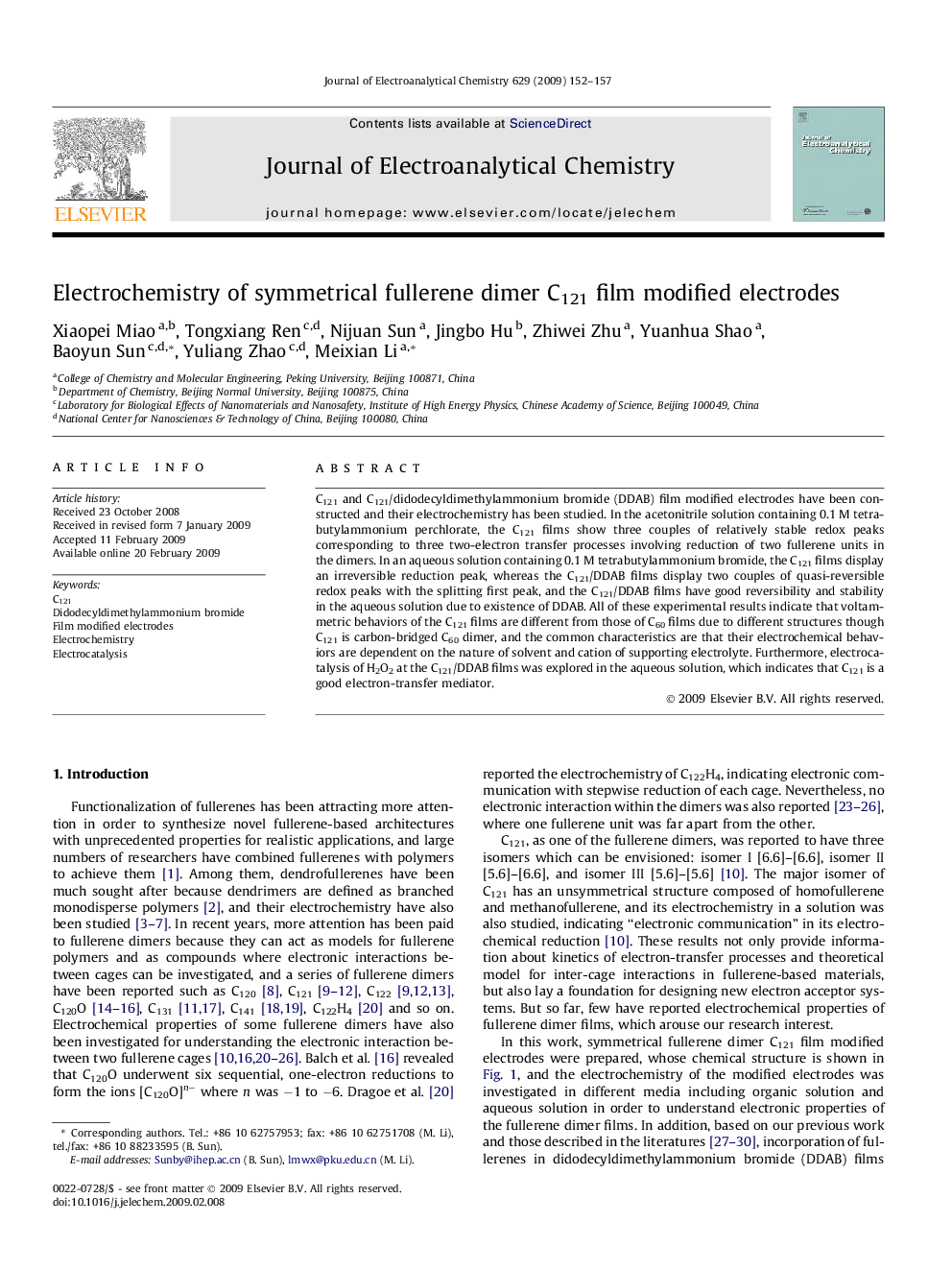| Article ID | Journal | Published Year | Pages | File Type |
|---|---|---|---|---|
| 220502 | Journal of Electroanalytical Chemistry | 2009 | 6 Pages |
C121 and C121/didodecyldimethylammonium bromide (DDAB) film modified electrodes have been constructed and their electrochemistry has been studied. In the acetonitrile solution containing 0.1 M tetrabutylammonium perchlorate, the C121 films show three couples of relatively stable redox peaks corresponding to three two-electron transfer processes involving reduction of two fullerene units in the dimers. In an aqueous solution containing 0.1 M tetrabutylammonium bromide, the C121 films display an irreversible reduction peak, whereas the C121/DDAB films display two couples of quasi-reversible redox peaks with the splitting first peak, and the C121/DDAB films have good reversibility and stability in the aqueous solution due to existence of DDAB. All of these experimental results indicate that voltammetric behaviors of the C121 films are different from those of C60 films due to different structures though C121 is carbon-bridged C60 dimer, and the common characteristics are that their electrochemical behaviors are dependent on the nature of solvent and cation of supporting electrolyte. Furthermore, electrocatalysis of H2O2 at the C121/DDAB films was explored in the aqueous solution, which indicates that C121 is a good electron-transfer mediator.
